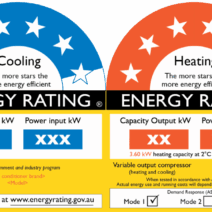In the realm of automotive advancement, few features have garnered as much attention and admiration as dual climate control systems, especially in the context of Chevy trucks. How often have you found yourself harmonizing with a passenger who prefers a toasty interior while you crave a brisk breeze? This scenario poses a playful question: Can dual climate control be the secret weapon for achieving cabin bliss during those cross-country road trips or daily commutes? As we navigate the evolution of this technology in Chevy trucks, it becomes apparent that convenience and comfort are quintessential to the driving experience.
Chevrolet, a titan in the automotive industry, has remarkably evolved its truck offerings since the early 1900s. From the introduction of the first Chevrolet truck in 1918 to today’s technologically sophisticated and comfortable vehicles, one enduring need has always been present—the desire for comfort, particularly in fluctuating weather conditions. The advent of climate control features in vehicles marked a landmark shift in consumer expectations, making full cabin temperature regulation a non-negotiable aspect of modern transportation.
In the late 20th century, air conditioning systems were becoming standard in trucks. Initially, they offered basic temperature control, allowing drivers and passengers to adjust their surroundings with a single dial. However, this simple setup often fell short when individuals with varying preferences occupied the same space. As diverse technologies emerged over the years, the automotive industry sought to cater to the needs of multiple passengers simultaneously, thus paving the way for dual climate control systems.
By the mid-2000s, it became evident that Chevy trucks needed to adapt with the changing landscape of consumer needs. The introduction of dual climate control options provided a solution that allowed both the driver and front passenger to independently regulate air temperature and airflow. This revolutionary move not only enhanced comfort but also underscored Chevrolet’s commitment to driver satisfaction. The sophisticated technology enables customizable temperature zones, transforming the traditional truck into a sanctuary for occupants and ensuring a more enjoyable ride.
Fast forward to the 2014-2018 Silverado and Sierra models, and dual climate control systems became a standout feature, elevating the experience of Chevrolets to new heights. These trucks were designed for versatility, whether used for rugged work tasks or weekend getaways. With intuitive interfaces and advanced sensors, the upgraded climate control systems not only adjusted the temperature effectively but also monitored humidity levels and airflow direction, allowing for more nuanced comfort regulation. Chevy recognized that consumers not only sought functionality but also sophistication in their driving experience.
Yet, while dual climate control systems have indeed transformed truck interiors, they also present potential challenges. For instance, what happens when the tech fails, and the delicate equilibrium of temperature settings descends into a battle of discomfort? Although the likelihood of failure in modern systems is low owing to extensive engineering, issues such as electronic malfunctions or software glitches can still occur. Furthermore, the complexity of these systems requires diligent maintenance to ensure optimal performance. Owners must navigate regular inspections and repairs, which can pose an inconvenience as they seek to preserve their cabin sanctuary.
Moreover, while the advantages of dual climate control are undeniable, the rising integration of electronic systems into vehicles, such as those found within dual climate controls, raises questions about sustainability. In an era where environmental concerns dominate conversations, can the production and maintenance of these high-tech refrigeration systems coexist with eco-friendly practices? It’s imperative to consider how the use of refrigerants in air conditioning systems impacts global warming and what innovations can minimize these impacts.
Chevy has begun addressing these issues as manufacturers emphasize the development of more sustainable materials and energy-efficient systems. As we move toward an era where diesel and gasoline engines face scrutiny, manufacturers are exploring electric vehicles that promise lower emissions. The shift towards electrification might also lead to more energy-efficient climate control systems. Staying ahead of environmental challenges while embracing comfort represents a forward-thinking approach that will benefit both the consumer experience and the planet.
Looking ahead, it’s essential to consider how the evolution of dual climate control in Chevy trucks might inspire future innovations. Will we one day see smart climate systems that learn individual preferences and automate adjustments on the fly? Could the integration of artificial intelligence elevate the customizable experience even further? As technology advances, trusting machines to create an ideal atmosphere in a vehicle seems not only possible but likely.
In conclusion, the timeline of dual climate control systems in Chevy trucks reflects a larger narrative: the steadfast pursuit of comfort amid evolving consumer demands and environmental challenges. From the simple dials of early models to the sophisticated dual controls of today’s Silverados and Sierras, the journey illustrates a fascinating blend of innovation, comfort, and responsibility. As we drive forward, both literally and figuratively, it remains vital to embrace these advancements while mindful of the implications on our environment. Ultimately, the quest for the perfect cabin climate may continue as an unending journey—one that reflects our collective values as consumers and stewards of the earth.


